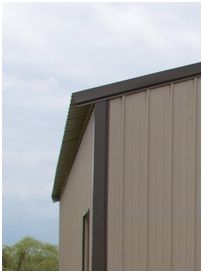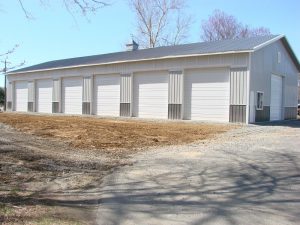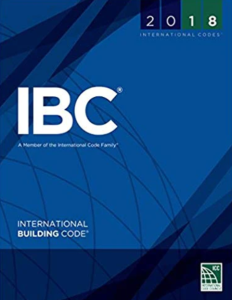Three decades ago, when I was a newbie in the pole building industry, I was working in the Willamette Valley of Oregon. One of the local roll formers was selling steel roofing and siding as 26 gauge or (as they called it) .018E.
To begin with, what is a steel roll former? The process of roll forming is one of the simpler manufacturing processes. It begins with a large coil of sheet steel which is fed through an entry guide to properly align the material as it passes through the rolls of the mill. Each set of rolls forms a bend until the material reaches its desired shape. Roll sets (or dies) are mounted one over the other on a pair of horizontal parallel shafts supported by a stand.
As I am the curious sort, I inquired of this manufacturer, “Exactly what is .018E?” Their explanation was their steel panels would measure as thick as .018 of an inch including the paint! I also found, they were basing their “26 gauge” off the Browne and Sharpe Gauge Chart, which is for wire gauge, not sheet steel. Obviously truth in advertising may have been stretched.
The American Iron and Steel Institute (AISI) publishes the accepted measurement standards for steel thickness. 29 gauge steel (the standard in the post frame industry) has an average thickness of .0172 of an inch (with a minimum of .0142). 28 gauge steel has an average thickness of .0187 (minimum .0157) and 26 gauge is .0217 (minimum .0187).
These thicknesses are all measured prior to the application of any primers or paint.
Steel coil is sold by the steel mills or wholesalers to roll formers by weight. Roll formers sell the finished formed roofing and siding by the lineal foot. Roll formers make the greatest profit by ordering steel coil which is as close to the minimum thickness as possible. When roll formers order steel coil, they place orders by minimum steel thickness (e.g. .0145 min would be 29 gauge).
We found some challenges with this when we had a closely monitored government project which specified 26 gauge steel. We deal with every major roll forming company in the country, and not a single one of them could guarantee their 26 gauge steel as being able to meet a minimum steel thickness of .0187. All of them confessed to ordering 26 gauge as either .018 or .0185 min!
To give a perspective on steel thickness differences, from 29 gauge to 26 gauge the difference in thickness is .0045 of an inch. A sheet of 20# paper measures .0038 of an inch. Roughly speaking the difference between the two gauges is about the thickness of a piece of paper! In comparing minimum thicknesses, although a sheet of paper may not sound like much, 26 gauge steel is 31.7% thicker than 29 gauge.
Now the important part – how much load will a steel panel carry? The “weak link” in a pole building structure is not the steel roofing and siding, it will be found somewhere in the underlying framing system. Taking a look at the span tables provided to us by American Building Components (ABC) for their Imperial Rib® (Imperial Rib is a registered trademark of ABC) panel, when placed across three equal spans of 24 inches, 29 gauge will support a live load of 124 pounds per square foot (psf) and 26 gauge 141 psf. The difference is only 13.7%!
Unless a building is at a snow ski resort, roof snow loads are probably not going to approach 124 psf, but what about wind loads? The same 29 gauge Imperial Rib® panel will support 163 psf in wind load, roughly equal to 252 miles per hour! For a perspective, the highest officially recorded wind speed on Earth was 231 mph. It was logged on 12 April 1934, at New Hampshire’s Mount Washington Observatory at the summit.
Bottom line is… do you need 26 gauge steel? No, you really don’t. 29 gauge is going to do everything you need it to do. When would you need 26 gauge steel? If you are going to purchase an all steel building and have 5 feet between your purlins and 7 feet between your girts. On a wood framed building with half those spacings or less, it’s just overkill. Beware of those who try to sell you something you don’t really need.










That is a great little article on something that has baffled me for awhile. Thank you. What do you think I should use as a standard span table for steel roofing for west coast WA state? Most common manufacturer or just a typical AISI table? I find that commonly used material varies widely across states.
Thanks again,
Jason
You should utilize the span tables provided by the actual manufacturer of the product being specified.
Mike,
I have a question regarding my last post. Is there a standard minimum corrugation depth and spacing for 29 gauge metal roofing? I’m just trying to get some vertical and lateral load numbers for the weakest 29 gauge metal roofing out there, regardless of the manufacturer.
Thanks,
Jason
The most typical panels used have a 36″ net coverage, high ribs of approximately 5/8″ every 9″, however slight differences occur between manufacturers.
Sorry for the continuation…regarding lateral shear values, I realize that will be governed by the screw size and spacing, so your opinion on what that should be as a minimum industry standard would also be appreciated. I’m assuming a #8 washer head screw @ 12″ o.c. edge and 24″ o.c. field? Any tables you know of for this would be greatly appreciated. I just don’t do enough pole barns to have this info readily available. I can certain find some info per mfr., but as you know it varies widely.
thanks again
Jason
What screw size did you actually use?
Hansen Pole Buildings uses the Leland Industries Diaphragm screw, which can be found at: https://lelandindustries.com/11-master-grippers.html#mastergrippers-screws
#8 diameter would be far too small. You might review this paper to see if it will allow you to develop the numbers you are looking for: http://www.dissertations.wsu.edu/Thesis/Summer2014/D_Aguilera_080714.pdf
By the way, your comment above about ABC 29 ga. imperial rib supporting 163 psf wind load should provide the screw size and spacing that achieves that, lest someone take that info and misuse or misunderstand it.
The ABC table does not specify what screws were used in their testing, however their installation literature specifies the use of #10 x 1-1/2″ screws, one each side of the high ribs at top and bottom of panels, 9″ on center along field supports.
What about oil canning with thinner metals such as 29 gauge? Is that common?
With roll formed panels oil canning is only an issue with 29 gauge when it is used for standing seam.
Am in theprocess of buying a metal carport canopy through Lowes. The brand name is Arrow.. the roof galvanized steel pieces are29 gauge.. the supports holding the roof are5’-6’ apart.
Is 29 gauge thick enough??
Keeping in mind these light gauge frames are not permanent structures, I would be more concerned about the entire thing blowing away or collapsing in snow. 5’6″ does sound like a very long span for any sort of a load.
How about a discussion about how well different metal thicknesses resist denting from hail?
.
https://www.hansenpolebuildings.com/2020/11/how-to-minimize-possible-hail-damage/